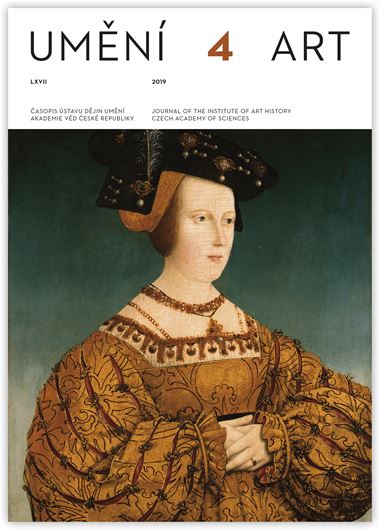Peter Megyeši
The Trecento Angevin Polyptych, the Adoration of the Magi, and a Thirsty Servant
The portable folding polyptych, now in the holdings of the Moravian Gallery in Brno (A 559), was published forty years ago by Olga Pujmanová as one of the earliest and also finest works of the Italian Trecento in former Czechoslovakia. Later on, the polyptych was analyzed by the scholars Mojmír S. Frinta, Tanja Michalsky, Kaliopi Chamonikola, Markus Hörsch and Vinni Lucherini. The treatise is devoted to the iconography of the scene of the Adoration of the Magi that contains a hitherto-overlooked motif of a drinking servant. The scene in the Anjou polyptych is the earliest example of the iconographic type of the Adoration of the Magi, widespread especially in 14th- and 15th-century wall painting. The motif is explained in the book Speculum humanae salvationis (Mirror of Human Salvation). In the ninth chapter, dealing with the story of the Adoration of the Magi, a passage from the Second Book of Samuel 23: 15–17 is mentioned as an event prefiguring this New Testament story. The motif of a thirsty servant evokes the typological linking of events of the Old and New Testaments, but above all, through the visualization of the thirsty craving for the water of life, also draws attention to the heavenly water of eternal grace brought, according to the text, by the ‘heavenly innkeeper’ from Bethlehem. The thirsty servant in the Adoration scene — as the visualization of the longing for the life-giving liquid, not only in the physical but also spiritual sense — is one of the examples of the collective imagination that appear in the form of parables in various parts of the Bible: Isaiah 12: 3; 44: 3; 55: 1, Psalms 42: 1–3, John 4: 13–14; 7: 37–38. The analysis of the depiction of the Adoration of the Magi had interpreted the intentional meanings produced during the conception of the iconographic programme, which the observer could find in the image during pious contemplation of the painting. The object used during travels itself portrays and thematizes not only the physical journey and the quenching of thirst with water of life but also suggests to its user notions of a spiritual journey leading to ‘the heavenly innkeeper who pours the water of grace to those who thirst and amply gives water of life to those who are parched’.
Peter Megyeši: peter.megy@gmail.com
Full-text in the Digital Library of the Czech Academy of Sciences:
https://kramerius.lib.cas.cz/uuid/uuid:b0aa3601-ad29-4173-956a-4349be950733
< back

